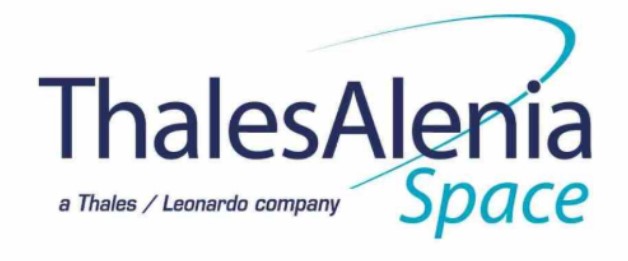-
StatusOngoing
-
Status date2025-08-27
-
Activity Code6B.132
The scope of the current proposal covers the data centre of R4.3 Space Gate solution. This proposal does not include medium to low Earth orbit (MEO/LEO) constellations as an objective, but it will help achieve the differentiation of Space Gate through dynamic and flexible features. These include:
- Virtualisation of software in data centres;
- Forward link fast recovery capability;
- Over-the-air (OTA) terminal software and configuration update;
- The diagram hereafter illustrates the architectural view of the platform planned to be used in order to validate the functional operation of the Formation-Level Fault Recovery (FLFR) and OTA software update add-on along with the Space Gate system.
| Objective | |
| Generate a complete set of product requirements. | |
| Definition | Complete an initial design concept to allow development work to continue. |
| Generate the appropriate supporting analyses demonstrating technical and economic feasibility of the product. | |
| Product | Implementing Ka non-exclusive & Forward Link Fast Recovery |
| Implementing Over The Air Software Update | |
| Validation | Validation Ka non-exclusive & Forward Link Fast Recovery |
| Validation Over The Air Software Update |
The scope of this project is to develop two add-ons and to integrate them in the already existing data centre of the Space Gate product.
Therefore, in addition to the actual developing of the two add-ons, the main challenge is the integration in an already existing product. This implies an advanced knowledge of the Space Gate product and an flawless collaboration with Thales Alenia Space (TAS) France teams, who were - and are still - in charge of the overall development of Space Gate.
Integrating the product in the latest version of Space Gate(R4.3) will answer to the VHTS market:
- To support customers in maximising revenues;
- To differentiate through dynamic and flexible features:
- Virtualisation of software in data centres;
- Beam and link handover capability;
- N+P and smart diversity.
The proposed activity concerns two distinct features of the link hub and management hub components of the Space Gate data centre:
- Ka non-exclusive and forward link fast recovery
This is a link hub feature designed in order to provide resilience capability to the Space Gate system against external Ka-band jamming.
- OTA software update
On cold start, restart or forward link carrier lock failure, the user terminal shall be able to autonomously scan from a factory predefined list of forward link carriers by the customer and updated by the baseband hub upon customer command.
- Forward Link Fast Recovery
This is a Link HUB feature designed in order to provide resilience capability to the Space Gate system against external Ka band jamming. It thus allows the Satellite Operator to extend its satellite bandwidth capacity to non-exclusive Ka Band.
In a scenario where the forward link is jammed, the satellite terminal will observe an FWD link failure. This feature aims at providing both the assessed satellite terminal as well as to the corresponding DataCenter a dedicated procedure that will lead to the fast recovery of the satellite terminal forward link.
- Over the Air (OTA) software update
In the next release, R4.3, there is evolution schedule in terms of functionality but also new features located at the Management-Hub side:
- Software update: Space Gate R4.3 solution shall support the OTA mechanism to upgrade the user terminal, with capabilities to manage the OTA upgrade.
- Configuration files: On cold start, restart or forward link carrier lock failure, the user terminal shall be able to autonomously scan from a factory predefined list of forward link carriers by the customer. The beam map is also needed by each terminal in order to deduce its location toward the satellite’s beams.
Activities performed by Thales Romania:
- Development of Link Hub
- Unitary integration and validation of Link Hub
- Development of Management Hub
- Unitary integration and validation of Management Hub
Activities performed by Thales Romania with TAS support:
- Specification and design relatives to Link Hub and Management Hub and their components;
- Co-Engineering of other SpaceGate teams to integrate Link Hub and Management Hub new features;
- Integration of Link Hub and Management Hub in the global Space Gate system.
The following figure shows the overall development logic and, for the Development Phase(s) included in this proposal, provides a visual description of the work package interrelations as well as the logical flow of activities.

Currently, the Critical Design Review (CDR) phase is done including the finalisation of architectural and requirements aspects (Software Design Document and Software Requirement Specification).
Moreover, the development and validation of the development and test platform has been achieved along with all the deliverables corresponding to this activity (CDR, Test Readiness Review (TRR), Factory Acceptance Testing (FAT) and Final Report (FR)).




